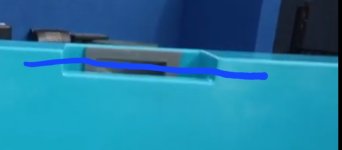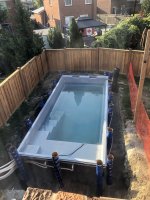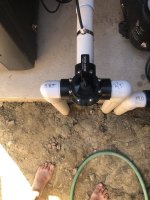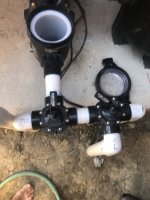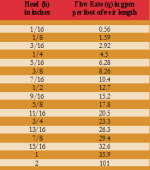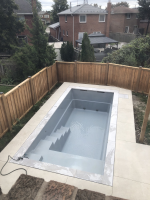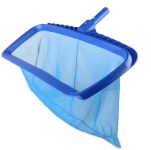Do you see any function at all here ? The angle is looking down at the skimmer. It's below the water level.
View attachment 542594
I think this may work.
To make this a catch basin and skimmer, we need to calculate the flow rate over the weir required.
I‘m not sure this matters but the wall drains also have separate connections to what I believe is the vacuum side of the pump.
I am assuming these are active at all times the pump is active; they are essential as a safety device for the solution I have devised.
Before I start on the potential fix, please be aware I am working from the other side of the planet so I am making some broad assumptions that may be incorrect based on the information provided. However, this fix does not involve breaking concrete (a bit of chasing but not breaking).
First, convert the existing weirs into the skimmer as such. To do this, we can apply some maths. Based on the supplied 400 mm width and the fact there are two, we can assume a total of 800 mm or 80 cm. The combined minimum flow rate for reasonably acceptable skimming in our jurisdiction is 400 litres per minute or about 106 US Gallons per minute. This may need adjustment of the suctions to the wall suctions to get good activity.
Please note this flow rate may require a change of pump, filter and any chlorination equipment and so on.
Custom baskets would need to be sourced and manufactured to suit the weir basins.
Please note the suction lines are assumed to be shared between the weirs and the wall suctions installed. Do not close the wall suctions off. They may require adjustment though. This assists with entrapment protection.
I have not calculated pipe velocity I will assume that the water flow can fit through the pipe and its opening.
To meet entrapment protection, I am proposing the construction of a minor control system. Effectively and somewhat unusual for a domestic installation, an immediate acting and super sensitive flow switch would be added to the pump's discharge. This will need to be adjusted to maximum sensitivity. In the event of any minor disruption from flow the flow switch will trip and stop the pump. The obvious disadvantage is this will require preferably 6 monthly testing or more often if practical to ensure it is 100% operational. Another disadvantage will be the basket for the pump and skimmers, and the filter must be kept very clean.
With the flow switch being immediately active, a timer will be required within the start sequence to allow the pump to start up and reach flow before the flow switch is engaged.
The bathing load will increase water depth by 15 mm or close enough to half an inch. Again, not calculated, I anticipate a weir depth of around 30 mm or just a bit over an inch during normal operation.
As the water depth is now more critical to the functioning of the pool an electronic level controller will likely be required. Hopefully, this can work on conductivity and require two wires for the level that can be chased into place without major work.
I am concerned about air reversing from the filter when the pump turns off. Again, not normally installed domestically, I would be inclined to fit a check valve or non-return between the pump and filter.
Unfortunately, this probably won't fix the vacuum issue. I think the intent of the design originally was to fit a blanking plate to one skimmer and a vacuum plate to the other, however, I may be wrong. Been wrong before.
I think to fix the vacuum a robot vacuum cleaner would likely be the best solution.
This is about as detailed as I can be from where I am. As I said it avoids cutting the concrete and could work with the existing pool.
Perhaps have a chat with a few contractors and see if any of them seem to follow this enough to give you confidence if you want to explore this solution. This is a suggestion, and we will need someone local to check if it will work. It will require a reasonably experienced technician to install and complete this work.


